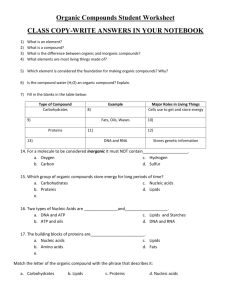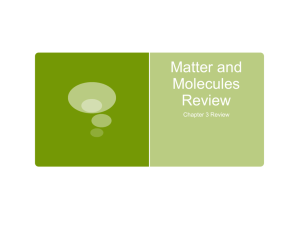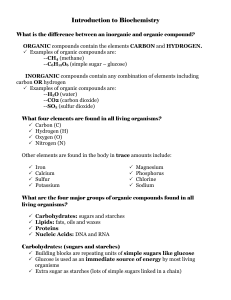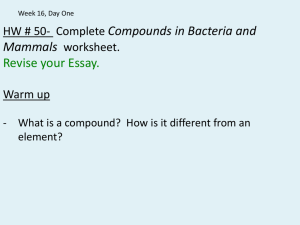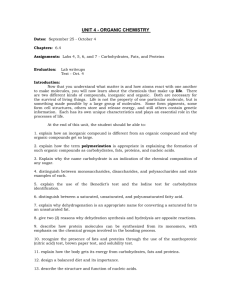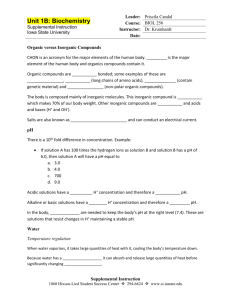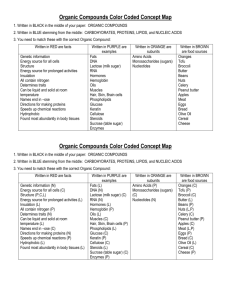Organic Compounds Student Worksheet- Teacher Key
advertisement
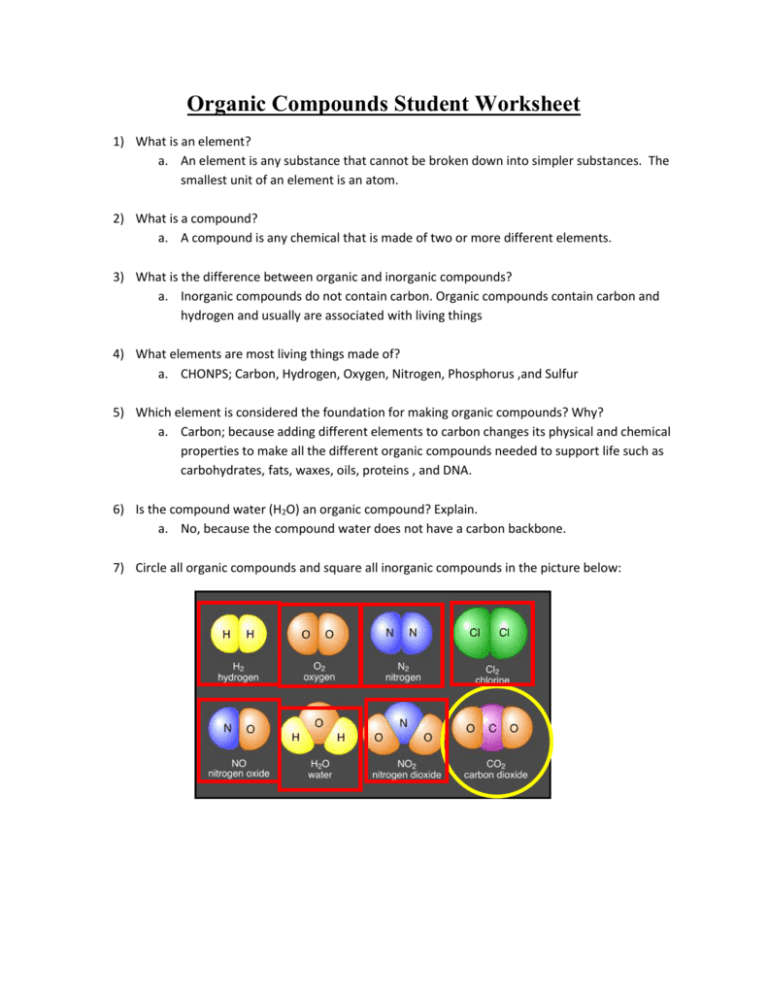
Organic Compounds Student Worksheet 1) What is an element? a. An element is any substance that cannot be broken down into simpler substances. The smallest unit of an element is an atom. 2) What is a compound? a. A compound is any chemical that is made of two or more different elements. 3) What is the difference between organic and inorganic compounds? a. Inorganic compounds do not contain carbon. Organic compounds contain carbon and hydrogen and usually are associated with living things 4) What elements are most living things made of? a. CHONPS; Carbon, Hydrogen, Oxygen, Nitrogen, Phosphorus ,and Sulfur 5) Which element is considered the foundation for making organic compounds? Why? a. Carbon; because adding different elements to carbon changes its physical and chemical properties to make all the different organic compounds needed to support life such as carbohydrates, fats, waxes, oils, proteins , and DNA. 6) Is the compound water (H2O) an organic compound? Explain. a. No, because the compound water does not have a carbon backbone. 7) Circle all organic compounds and square all inorganic compounds in the picture below: 8) Fill in the blanks in the table below: Type of Compound Carbohydrates 10) Lipids Proteins 14) Nucleic Acid Example 9) Sugars and Starches Fats, Oils, Waxes 12) Hair, nails, enzymes DNA and RNA Major Roles in Living Things Cells use to get and store energy 11) Store long term energy 13) Build organelles and help with body defense Stores genetic information 9. For a molecule to be considered inorganic it must NOT contain____________________. a. Oxygen b. Carbon c. Hydrogen d. Sulfur 10. Which group of organic compounds store energy for long periods of time? a. Carbohydrates b. Proteins c. Nucleic acids d. Lipids 11. Two types of Nucleic Acids are _______________and___________________. a. DNA and ATP b. ATP and oils c. Lipids and Starches d. DNA and RNA 12. The building blocks of proteins are________________________. a. Nucleic acids b. Amino acids c. Lipids d. Fats
